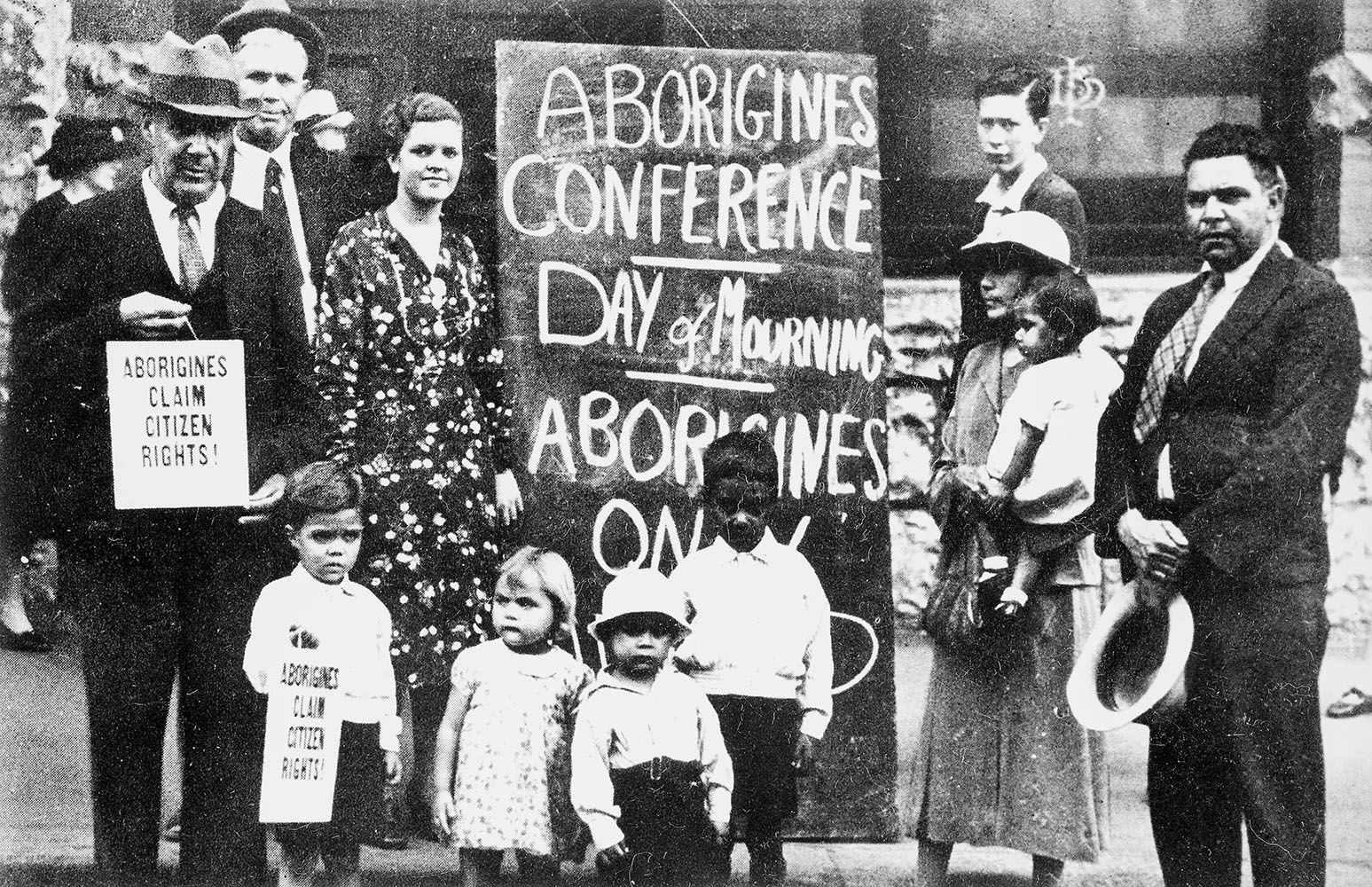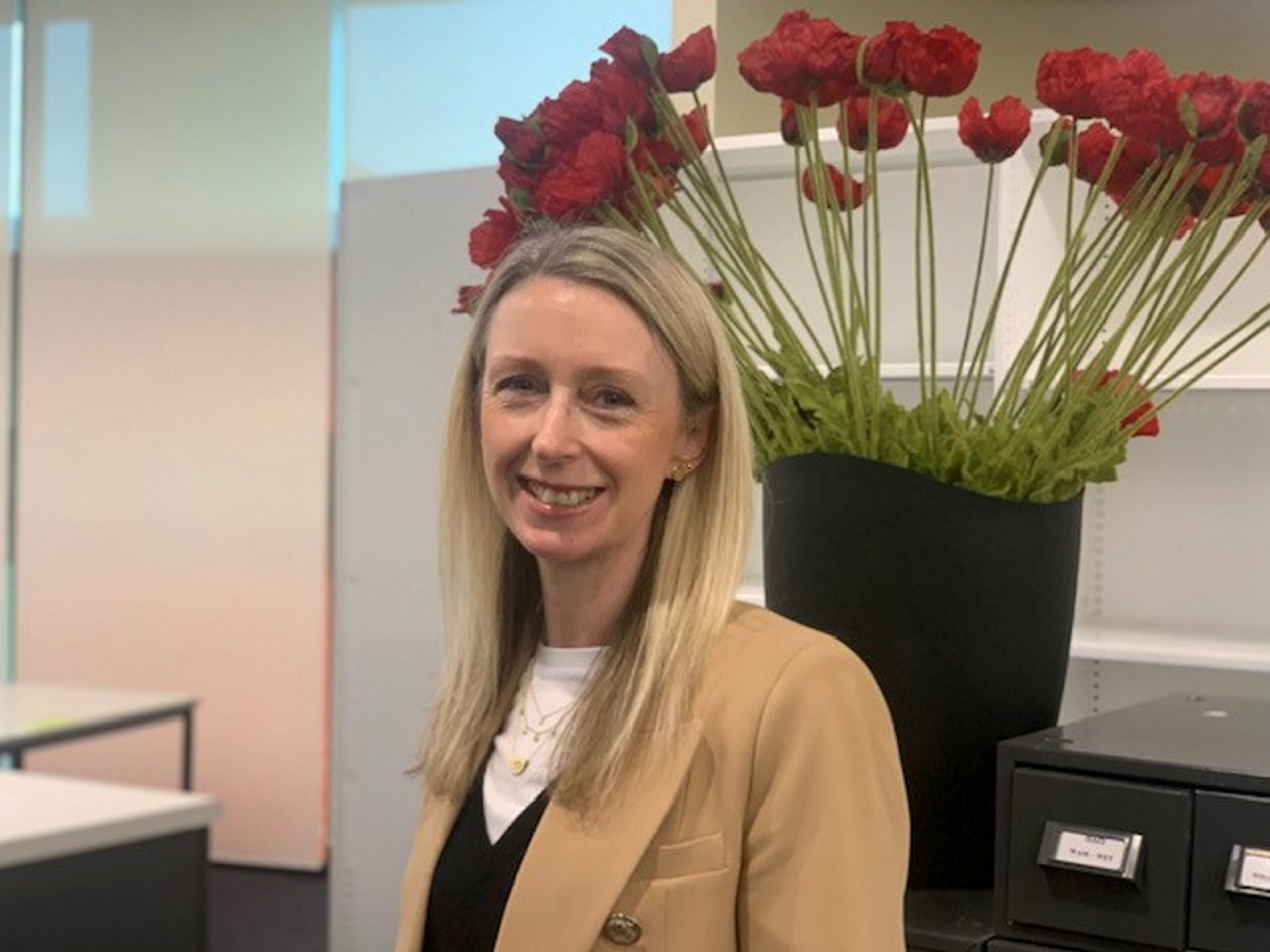Advocacy, allyship and the rise and fall of the Aborigines Protection Board
Long a day of protest and activism for First Nations people, 26 January provides an opportunity for all Australians to reflect on examples of advocacy and allyship from the past.
The year 1938, when white Australia celebrated the Sesquicentenary – the 150th anniversary of the landing of the First Fleet – was also a time when political agitation for the removal of the Aborigines Protection Board was at its peak. The campaign was led by First Nations organisations such as the Australian Aborigines League and the Aborigines Progressive Association, but many non–First Nations organisations also allied themselves to the cause, adding their voices to the protests.
Aborigines Protection Board
The Aborigines Protection Board was established in June 1883. Earlier that year the Colonial Secretary acknowledged that ‘there is much more to be done than has yet been done for the Aborigines before there can be any national feeling of satisfaction that the Colony has done its duty by the remnant of the aboriginal race’.1 The Board was charged with improving the welfare of Aboriginal people by providing instruction, aiding the cost of maintenance or clothing, and the provision of land, boats and implements of industrial work.2
The Aborigines Protection Act 1909 increased the powers of intervention available to the Board, placing restrictions on the movement of Aboriginal people, prohibiting alcohol, regulating employment and providing for medical examination and treatment.3
In 1915 the Aborigines Protection Amending Act gave the Board the power to assume control and custody of Aboriginal children if it believed this action to be in the moral or physical interest of the child, and to remove the child ‘to such care and control as it thinks best’. The children removed from their families under these powers are now often referred to as the Stolen Generations. In 1936 the powers of the Board were increased again to include the removal of any Aboriginal person to a reserve or property under its control; wages due to an Aboriginal person could be directed to be paid to the Secretary of the Board or other officer.4 These wages are now often referred to as stolen wages and were the subject of the NSW Aboriginal Trust Fund Repayment Scheme 2005–11.
Resistance
Political resistance to the actions of the Board by and on behalf of First Nations people grew during the 1920s and 30s. The Australian Aboriginal Progressive Association, established in 1924, campaigned against the Aborigines Protection Board and demanded rights to land, self-determination, citizenship and a stop to the removal of children.5
The Australian Aborigines League, launched in 1932, sought to improve living conditions for Aboriginal people and to enact legislation that would guarantee Aboriginal representation in Parliament.6
The Aborigines Progressive Association was formed in 1937 with the objective of achieving full citizen rights for First Nations people. It fought for ‘economic salvation’, campaigning for the provision of ‘educational facilities from primary schools to university, increased dole and food relief and the break down of autocratic control of mission stations’.7
Support
Public support for First Nations people and the causes advocated by these organisations was widespread. Premier’s Department Special bundle Treatment of Aboriginals in NSW 1936–1942 (NRS-12061-52-[12/8749.1] 62/1515 pt 1) includes letters to the government from bodies and individual members of the public in 1937 and 1938 voicing their protest, along with letters from the Aborigines Progressive Association and the Australian Aborigines League. The file also contains copies of responses to these letters and other relevant papers.
Among the many letters advocating on behalf of Aboriginal people we find a John Steel writing to the Premier in August 1937 requesting a thorough investigation of and a public report on the Aborigines Protection Board in response to a list of charges of maladministration published in the Macleay Chronicle of 7 July 1937. He writes: ‘citizens everywhere when spoken to on the subject voice indignation. Some say why should Aboriginals be turned off their reservations; they have a better claim to the land than the Government; THEY OWN THE LAND’.8
In November 1937 the Food Preservers Union of Australia wrote to inform the Premier that the Union had pledged itself to ‘press for a public enquiry into the working of the Aborigines Protection Board, to work for the abolition of the Aboriginal Protection Board and to do all in its power to emancipate the Australian aborigines and raise them to the white man’s status’.9
Further letters in the bundle are from writers as diverse as the Bishop of Armidale, who wrote concerning the reorganisation of the Aborigines Protection Board,10 and the Housewives Association (Progressive) of NSW advocating for the right of Aboriginal people ‘to own land in their own country’ (September 1937)11 and again to request that better food be provided to Aboriginal people on reservations as an emergency measure (February 1938).12
The Katoomba Branch of the Australian Labor Party wrote requesting that a chairman be appointed to the Board ‘who understood Aboriginal people and had their welfare at heart’, and asserting that Aboriginal people had the ‘right to elect their own representatives to the Board and to be paid for their time and expenses’ (August 1938).13
Investigations into the Aborigines Protection Board
In response to this growing agitation, the NSW Government appointed a Select Committee in November 1937 to investigate the administration of the Aborigines Protection Board.14
The Proceedings of the Committee, Minutes of Evidence and Exhibits are published in the NSW Parliamentary Papers 1938–1939–1940, vol 7, pp599–738. Although the Committee did not prepare a report, it was critical of the Board’s administration and the inadequacy of its budget to achieve its task.15
The failure of the Select Committee to report gave rise to further protests, including the Day of Mourning held on 26 January 1938, and a meeting held in February 1938 by the United Associations, headed by President Jessie Street and comprising the Feminist Club of NSW, the Housewives Association, the United Women’s Association, the Society for the Protection for the Native Races, the Aborigines Progressive Association and the Church Missionary Society. In March, the United Associations wrote to the government to express members’ disappointment at the sudden termination of the inquiry and to ‘strongly urge that the matter of dealing with the Australian Aborigines shall receive full consideration’. The Feminist Club of NSW sent a questionnaire to each parliamentary candidate running for office at the next state election asking whether they would press for a thorough investigation into the welfare of Aboriginal people, a more enlightened policy for dealing with Aboriginal people and a reorganisation of the Board.16
Although it didn’t provide a report, the Select Committee did recommend that the Public Service Board undertake a full investigation of the work of the Aborigines Protection Board and make suggestions for its future operation. The Public Service Board released its report and recommendations in 1938. The report can be read in the NSW Parliamentary Papers 1938–1939–1940, vol 7, pp739–86.
The report recommended ‘facilitating the absorption of Aboriginal people into the economic and social life of the community’ and establishing a complete record of all people subject to the powers of the Aborigines Protection Board. It also recommended that funding be increased to improve the standard of housing, improve food rations, develop agricultural production on Aboriginal stations, properly equip schools and provide necessary school staff, and that the Board be reconstituted with representatives from the departments of the Chief Secretary, Health, Public Instruction and Police and experts in agriculture, sociology and anthropology.17
Dissolution of the Board
The Aborigines Protection Board was finally dissolved in 1940 after new legislation was passed. The Aborigines Welfare Board was established in June of that year.18
The First Nations Community Access to Archives project at Museums of History NSW aims to improve access for First Nations people to language and cultural material in the State Archives Collection. Searching these records presents valuable opportunities for truth-telling and reflection upon the ongoing impacts of colonisation and government legislation on First Nations people in Australia. There’s no better time to do this than in the lead-up to a day recognising Australian nationhood and identity. Find out more about the First Nations Community Access to Archives project on our website. You can also contact us by email or join our stakeholder list.
Notes
1. Protection of the Aborigines, Minute of the Colonial Secretary, 26 February 1883, NSW Legislative Assembly Votes and Proceedings, 1883, vol 3, p919.
2. State Archives Catalogue, AGY-559 Board for the Protection of Aborigines, accessed 13 January 2025.
3. Aborigines Protection: Report and Recommendation of the Public Service Board of NSW, 16 August 1938, NSW Legislative Assembly Parliamentary Papers, 1938–1939–1940, vol 7, p746.
4. State Archives Catalogue, AGY-559 Board for the Protection of Aborigines, accessed 13 January 2025.
5. Australian Museum, The Australian Aboriginal Progressive Association (A.A.P.A.) John Maynard, 26 May 2020, accessed 13 January 2025.
6. Australian Institute of Aboriginal and Torres Strait Islander Studies (AIATSIS), The 1938 Day of Mourning, accessed 13 January 2025.
7. State Archives Collection, Museums of History NSW: Premier’s Department; NRS 12061, Special bundles, NRS-12061-52-[12/8749.1] 62/1515pt1Treatment of Aboriginals in NSW, 1936–42, p802.
8. State Archives Collection, Museums of History NSW: NRS 12061 [12/8749.1] 62/1515pt1, p334.
9. ibid, p412.
10. ibid, p395.
11. ibid, p320.
12. ibid, p318.
13. ibid, p75.
14. State Archives Collection, Museums of History NSW: NRS 12061 [12/8749.1] 62/1515pt1, Statement for the Cabinet by the Chief Secretary, 21 August 1938, p164.
15. State Archives Catalogue, AGY-559 Board for the Protection of Aborigines, accessed 13 January 2025.
16. State Archives Collection, Museums of History NSW: NRS 12061 [12/8749.1] 62/1515pt1, pp322–5.
17. Aborigines Protection: Report and Recommendation of the Public Service Board of NSW, 16 August 1938, NSW Legislative Assembly Parliamentary Papers, 1938–1939–1940, vol 7, p741.
18. State Archives Catalogue, AGY-559 Board for the Protection of Aborigines, accessed 13 January 2025.
Related

First Nations
Day of Mourning
January 26 has long been a day of debate and civic action. Those who celebrate may be surprised of the date’s significance in NSW as a protest to the celebrations of the anniversary of the arrival of the First Fleet on what was then “Anniversary Day” in NSW
Published on
